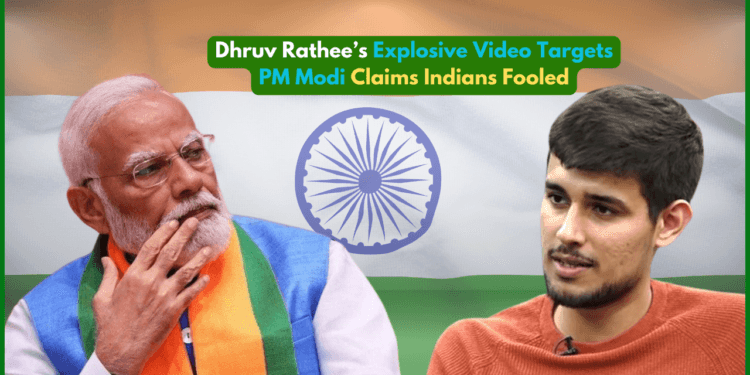New Delhi, March 14, 2025 – Indian YouTuber Dhruv Rathee has ignited a firestorm with his viral video “Reality of Narendra Modi | How Indians Were Fooled!” resurfacing in headlines, accusing Prime Minister Narendra Modi of misleading the nation. Uploaded last May and now trending again amid India’s political churn, the 29-minute exposé has amassed over 30 million views, thrusting Rathee’s bold critique into the global spotlight and reigniting debates about Modi’s decade-long tenure.
Rathee’s Scathing Take
In the video, Rathee, a Germany-based vlogger with 21 million subscribers, dismantles what he calls Modi’s “cultivated political narrative.” He alleges Modi exaggerated a humble tea-seller backstory—claiming a childhood of poverty contradicted by his family’s modest stability—and abandoned his wife for political optics, a move Rathee dubs “fake fakiri” (false asceticism). “Modi’s image as a selfless saint is a lie,” Rathee asserts, flashing images of Modi’s designer suits against tales of his supposed charity. He accuses the BJP of brainwashing voters with emotional manipulation, likening Modi’s tactics to those of historical autocrats like Hitler and Mussolini, while spotlighting a BJP worker, Mangal Vajpayee, who echoes blind devotion despite personal struggles.
Rathee’s critique extends to policy failures: unfulfilled 2014 promises like black money recovery and job creation, which he claims crumbled as demonetization tanked the economy and unemployment soared. “Indians were sold a dream, but woke up to a mirage,” he says, contrasting Modi’s “chaiwala” charm with a leadership style he brands manipulative and divisive.
A Ripple Effect Across India
The video’s resurgence—fueled by social media shares and WhatsApp forwards—has sent shockwaves through India’s political landscape, especially as Modi’s third term faces coalition strains post-2024 elections. With 460 million YouTube users in India, Rathee’s reach dwarfs traditional opposition voices, amplifying his call for accountability. “Never underestimate the power of a common man,” he tweeted last June, a sentiment now echoing louder as viewers question official narratives.
Supporters hail Rathee as a truth-teller exposing a “WhatsApp University” of BJP propaganda, while critics— including Modi loyalists—slam him as biased, cherry-picking data to smear the PM while glossing over opposition flaws. The video’s timing, ahead of state polls, has sparked speculation of political motives, though Rathee insists it’s about “safeguarding democracy.” India’s Supreme Court recently paused a government fact-check unit, a move some tie to digital dissenters like Rathee, yet he reports no direct censorship—only online trolling.
What’s Next?
As reactions pour in, Modi’s camp remains silent, but BJP IT cells are reportedly gearing up to counter Rathee’s narrative. The video’s call for transparency—backed by slick animations and archival clips—could nudge India’s youth, a key voting bloc, to rethink their stance. Will it spur official probes or fizzle under partisan noise? For now, Rathee’s digital dagger has struck a nerve, reshaping how Indians view their leader—and their democracy. Stay with todaypakinews.com for the latest on this unfolding saga.

















































